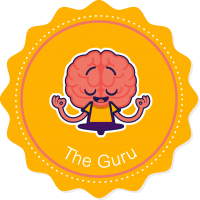Consider lesson plan as an essential instrument that not only guides your teaching but also serves as a powerful reflection tool. Just as a chef tastes their food as they cook it to adjust the seasoning or cooking time, you must reflect on your teaching methods and strategies to enhance the learning experience of your students.
Let’s break down how this process transforms you into a more adept and refined educator:
Step 1: Setting the Stage – Planning
Initiate the process by meticulously planning your lesson. This document acts as your teaching blueprint, ensuring a structured and purposeful delivery.
Step 2: The Classroom Unveils – Execution
As you execute your lesson plan, observe the dynamics of the classroom with a discerning eye. Your role extends beyond teaching; you become an active observer, noting reactions, engagement levels, and areas of resonance.
Step 3: Post-Performance Reflection
After the class concludes, take a moment for thoughtful reflection. Identify what aspects of the lesson resonated positively and areas that may require refinement. This critical analysis sets the stage for professional growth.
Step 4: Adjusting the Script – Iteration
Armed with insights from reflection, adjust and refine your lesson plan. Consider it a continuous improvement process – a methodical approach to optimizing the effectiveness of your teaching methods.
Step 5: Cultivating Professional Growth
Lesson by lesson, this reflective process becomes a cornerstone for professional growth. It’s not just about the lesson plan; it’s a deliberate journey toward becoming a more proficient and insightful educator.
Step 6: Crafting Optimal Learning Experiences
With each refinement, your lesson plan evolves into a strategic tool for crafting optimal learning experiences. This dynamic approach to planning and reflection ensures a continuous strive for excellence in the educational journey.
So, you see, your lesson plan isn’t a static document; it’s an instrument for strategic reflection and continual improvement. It helps you in the following ways:
a. Continuous Improvement
Reflecting on each lesson allows you to identify what worked and what didn’t. This knowledge is valuable for making continuous improvements to your teaching methods.
b. Student-Centered Teaching
It helps you adapt your approach better to meet the needs and preferences of your students. You can tailor your lessons to their learning styles, ensuring a more student-centered approach.
c. Addressing Challenges
Reflection enables you to recognize challenges or difficulties your students may face. This insight allows you to address those challenges and provide additional support when needed.
d. Goal Achievement
Reflecting on your lessons helps you assess whether your teaching aligns with your objectives. If not, you can adjust your lesson plans to ensure that you’re working toward your goals.







